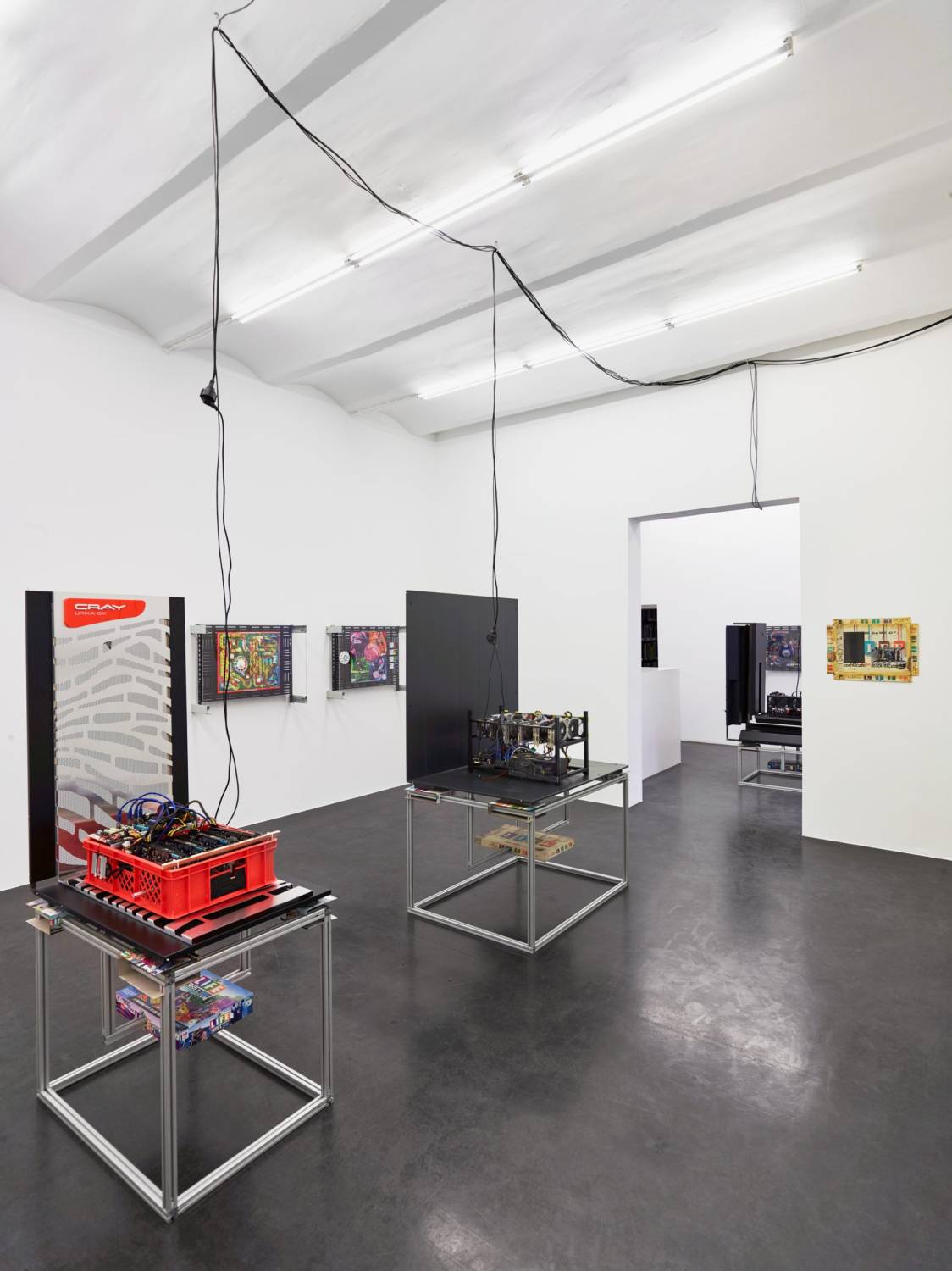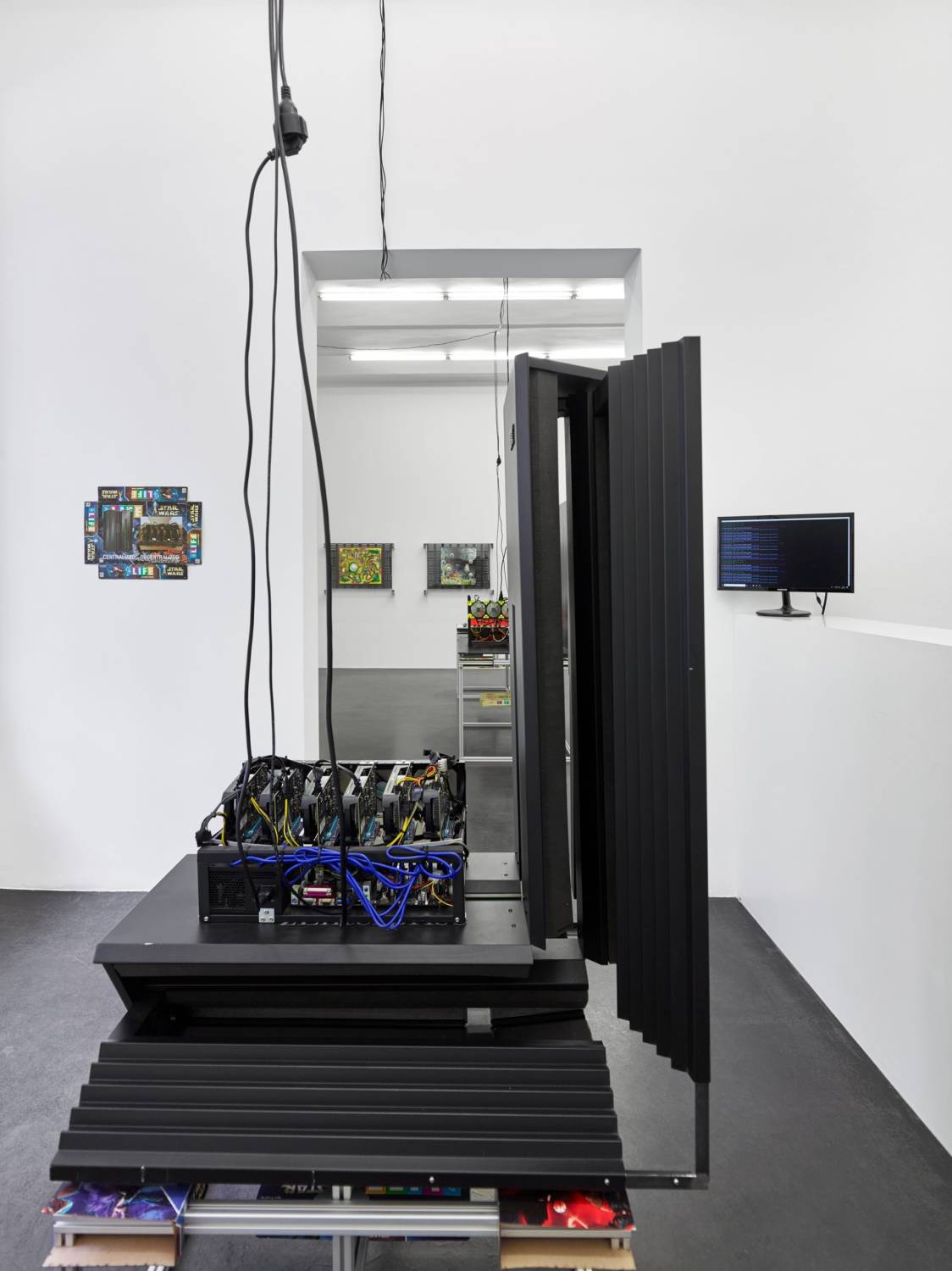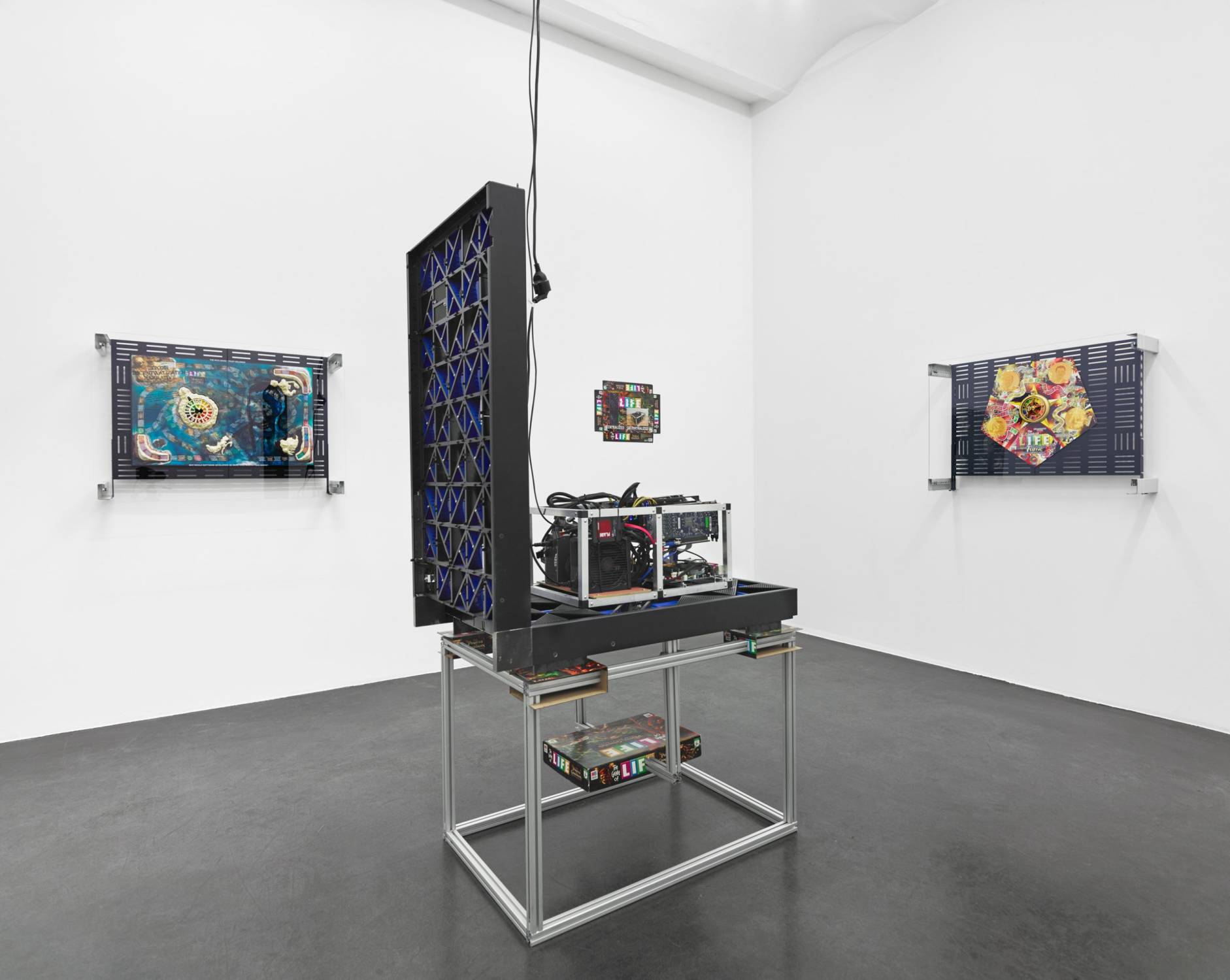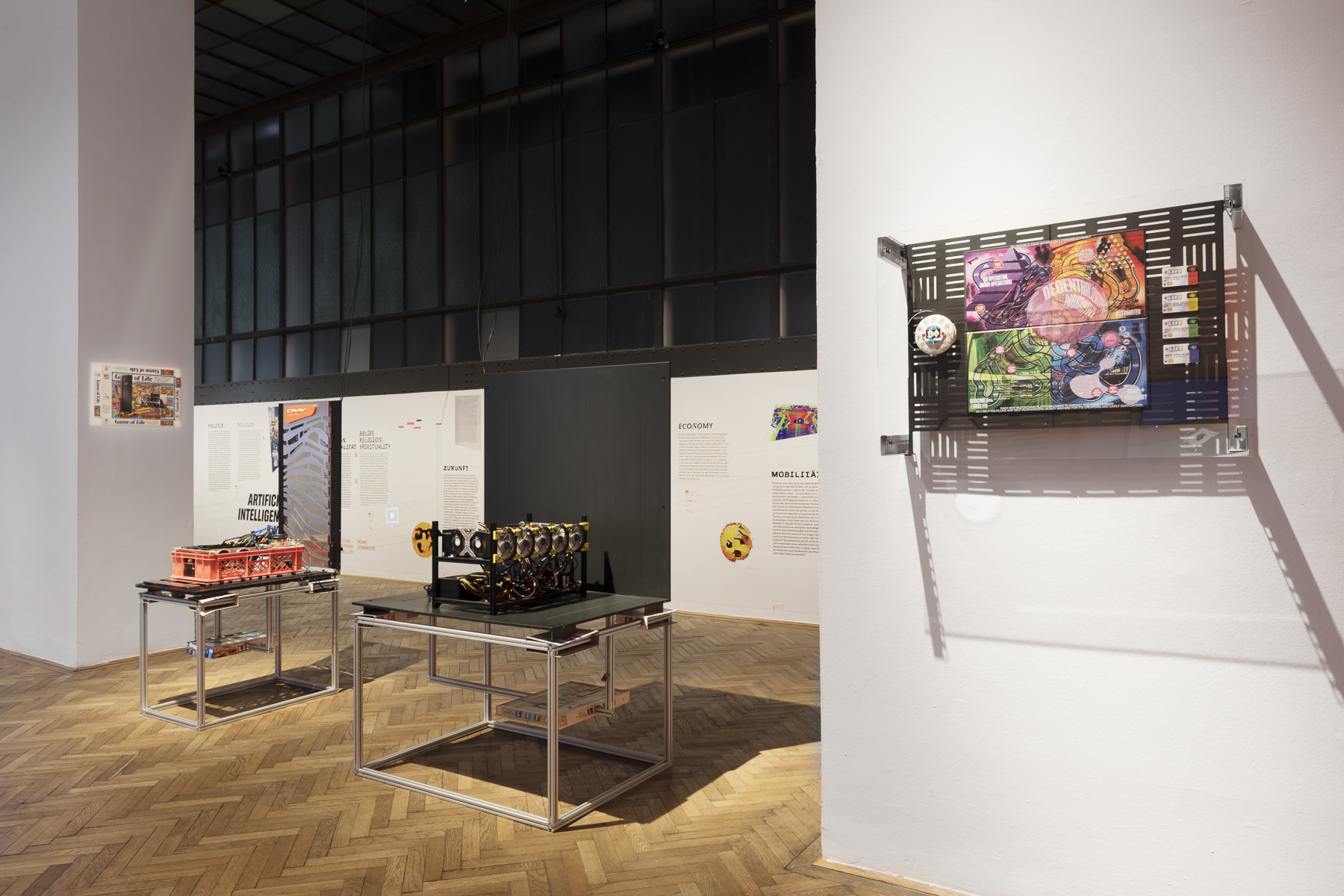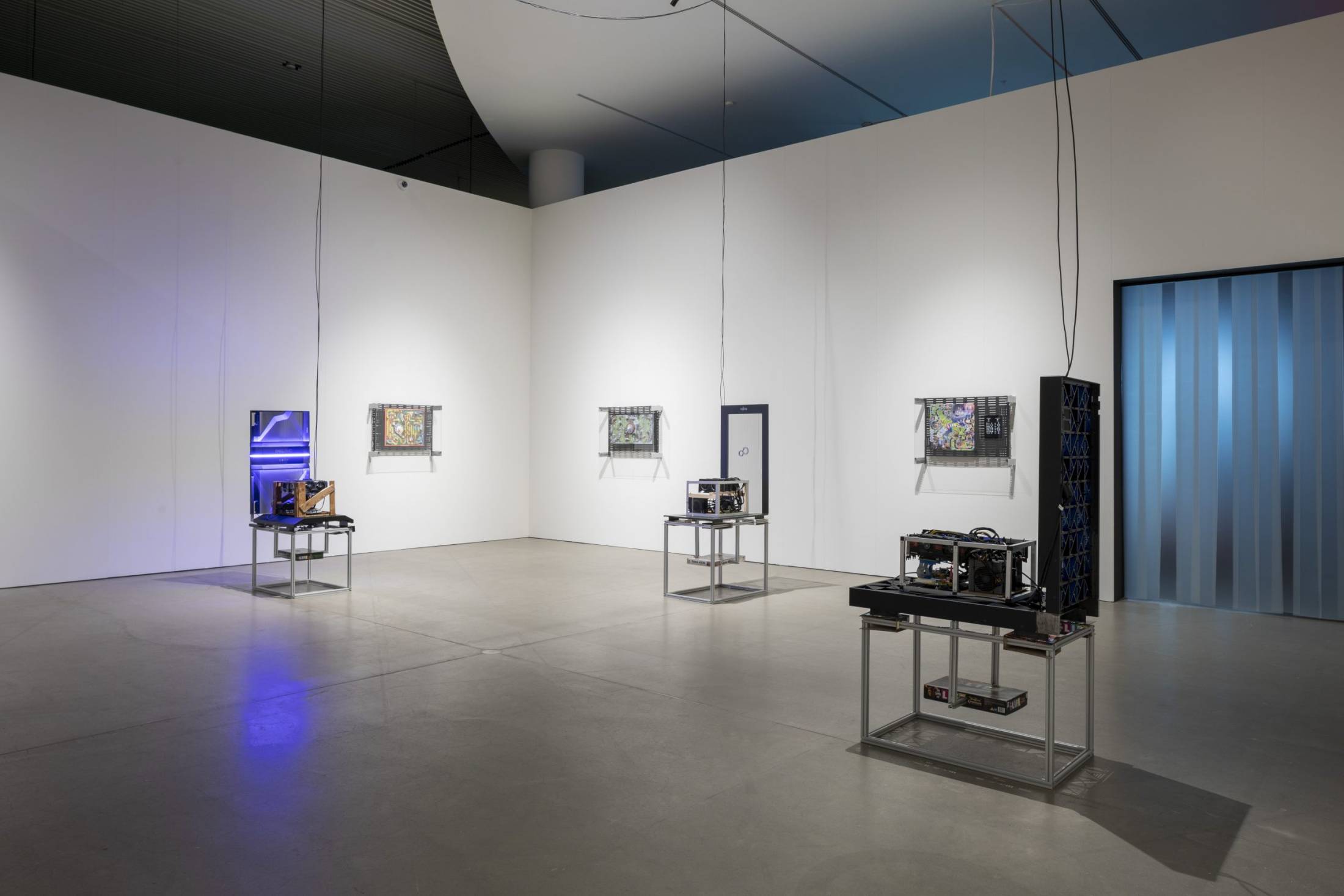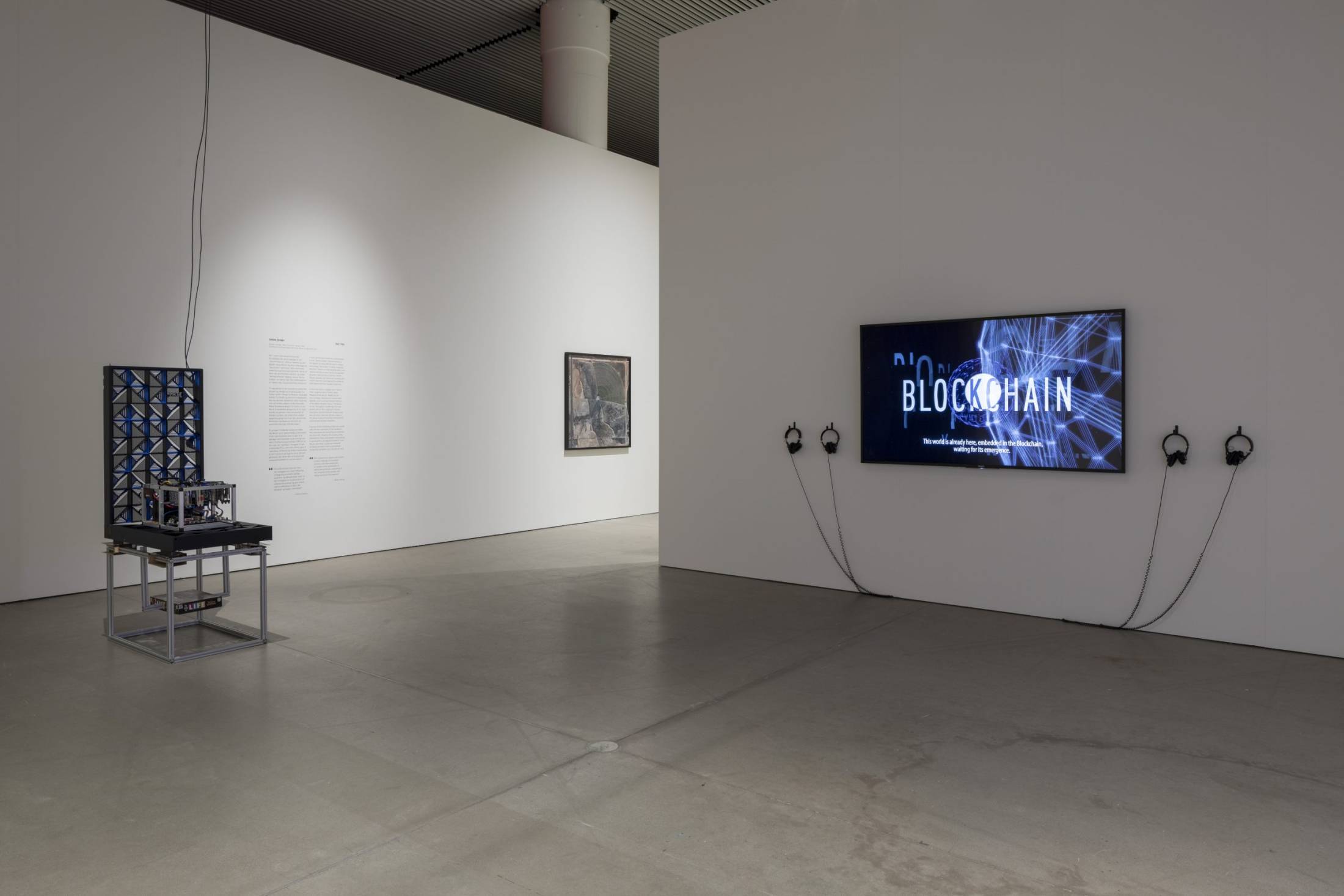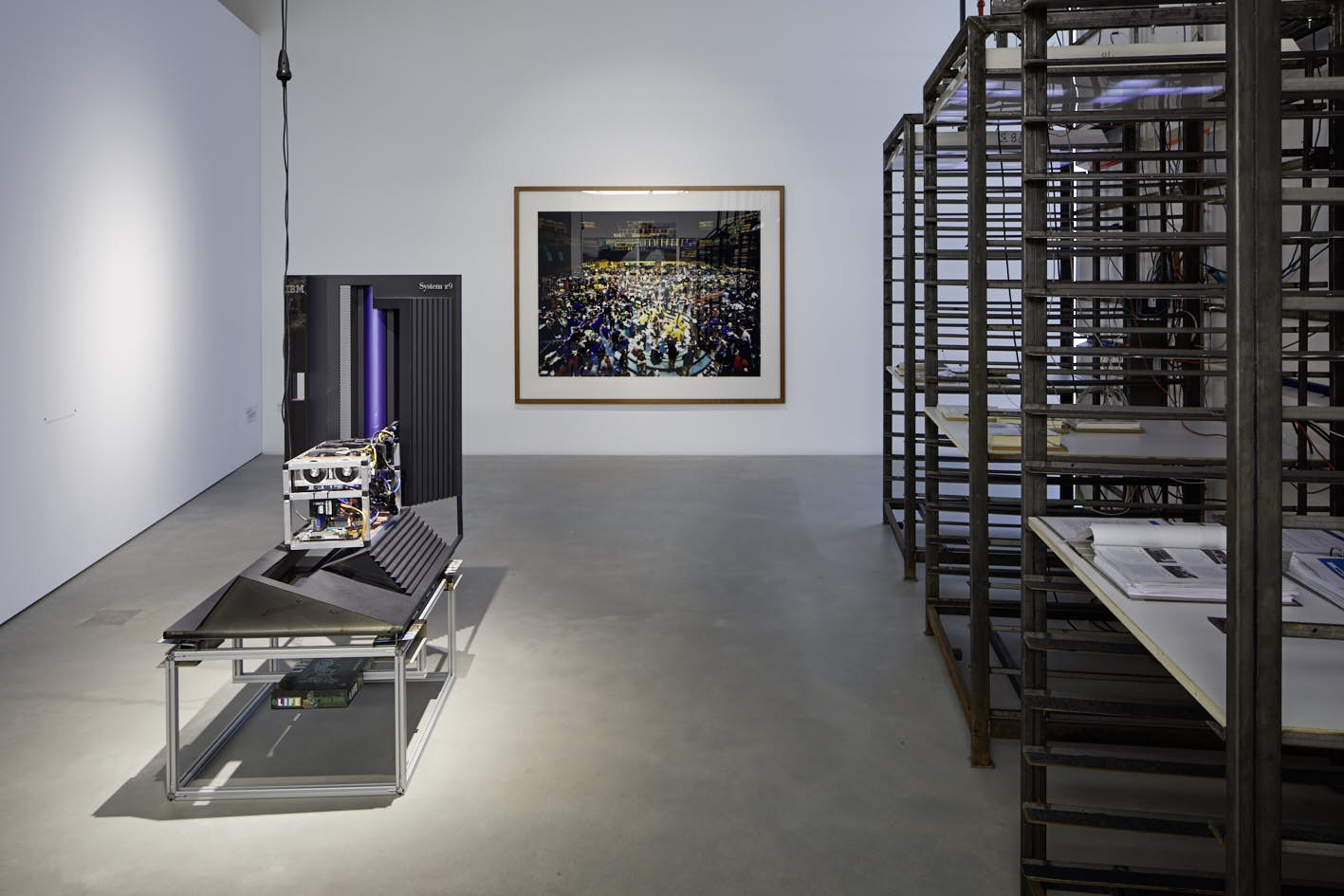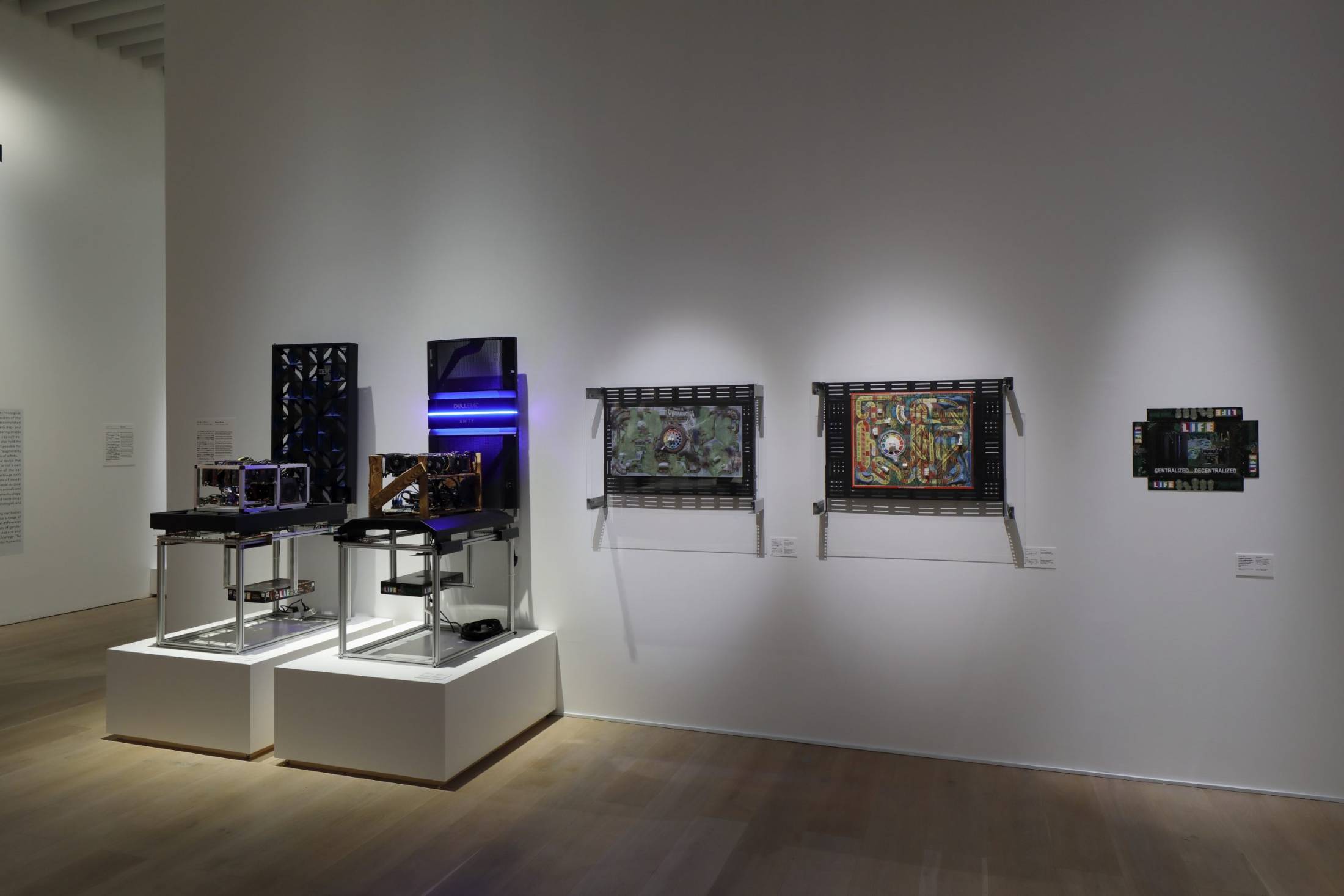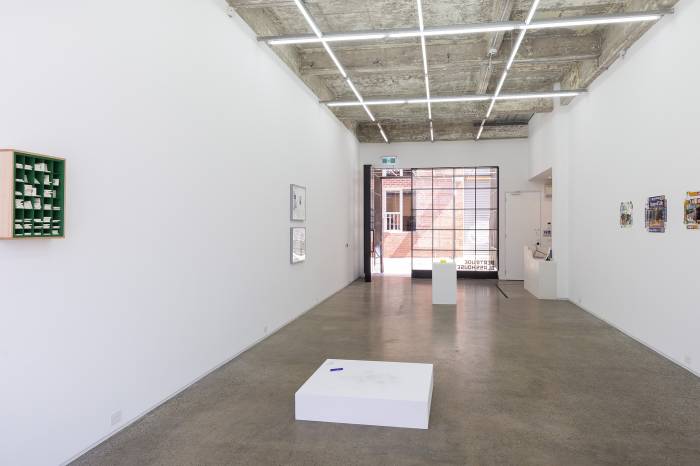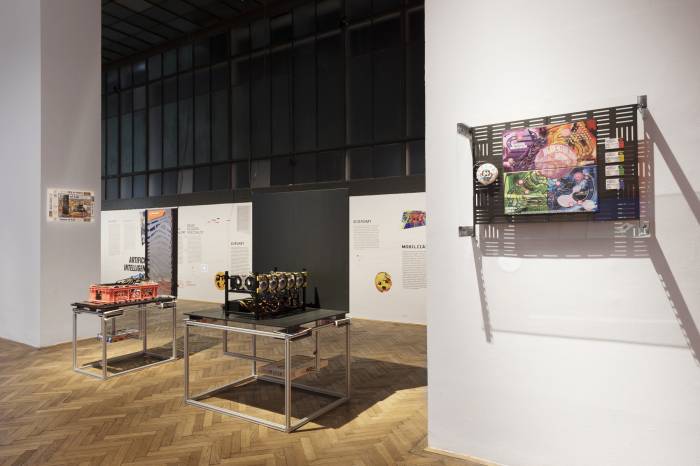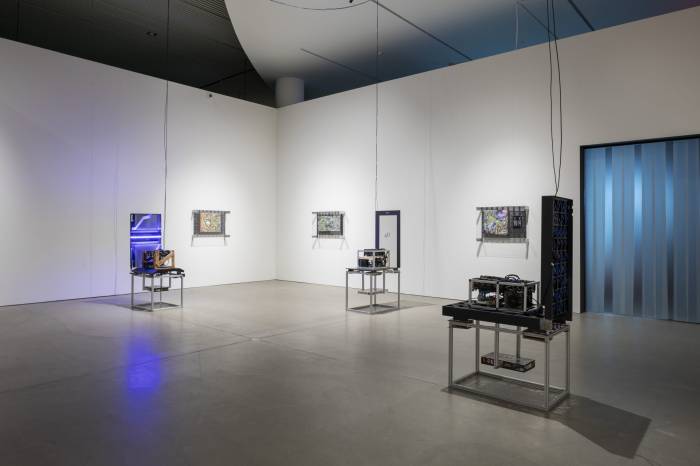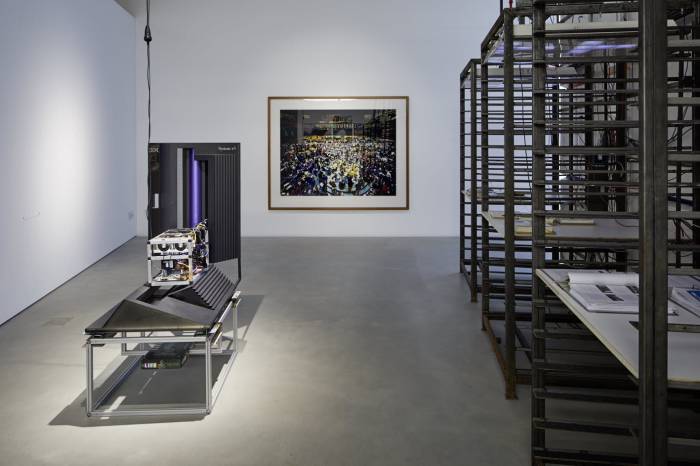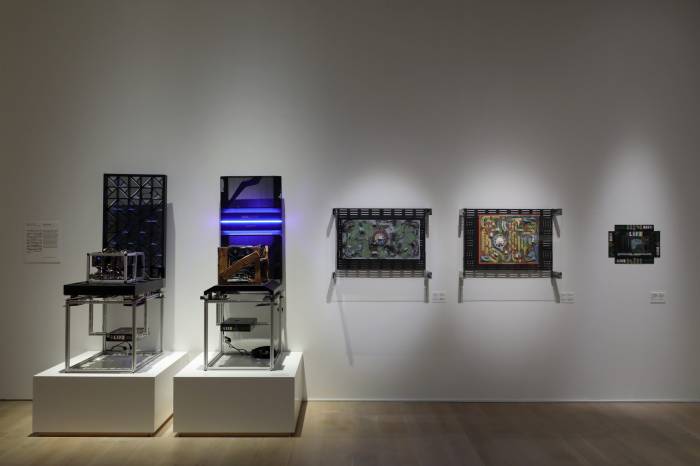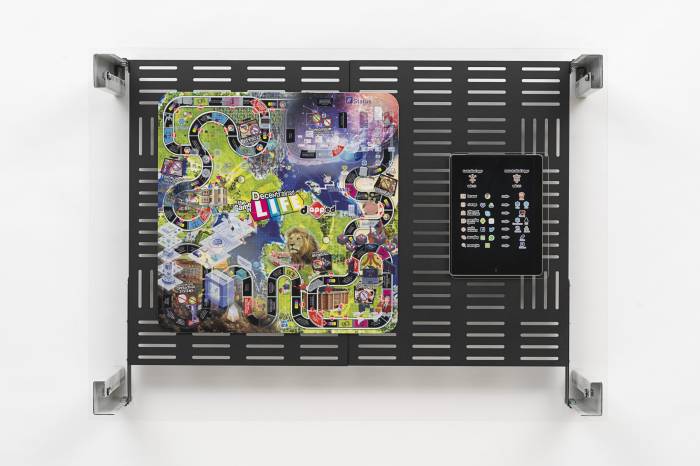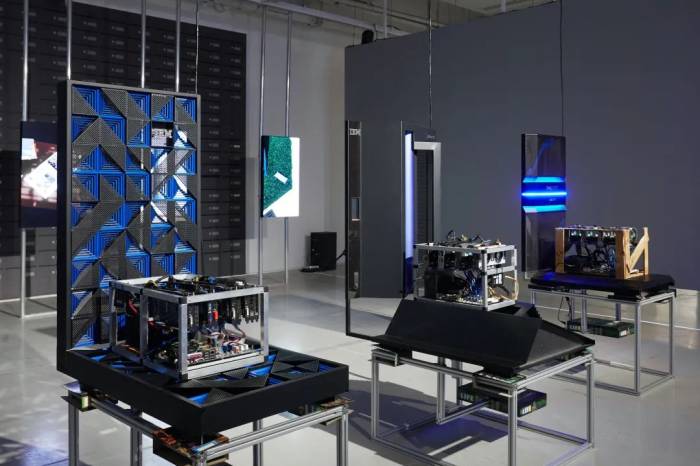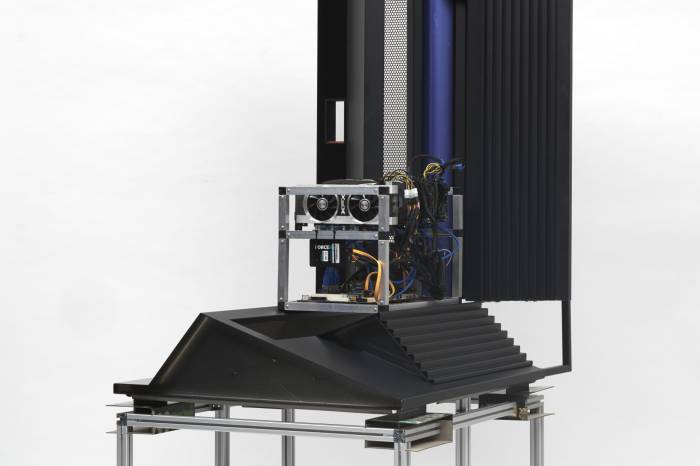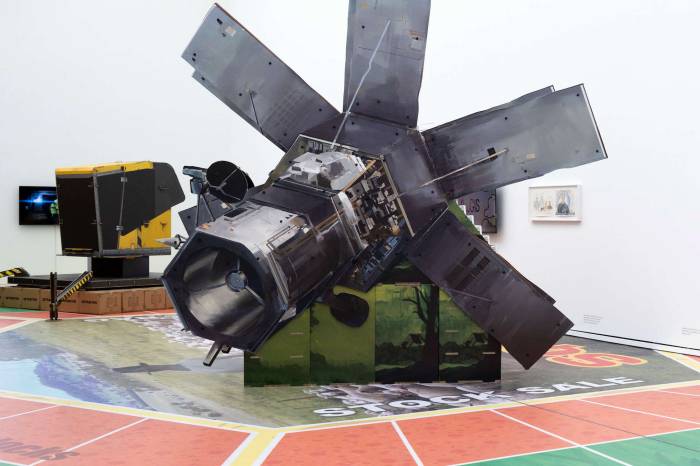The project, which saw its initial incarnation at Galerie Buchholz in 2016, includes a series of collages where imagery and language from crypto Twitter feeds, Medium thinkpieces, Reddit fan art, and company websites are overprinted digitally onto found game board editions of the Milton Bradley classic “The Game of Life”. The collages sit in sculptural frames made of components from server racks, superimposing the visual culture of decentralized tech onto a physical reminder of centralized computing. A complimentary group of floor-based sculptures isolate and interface key elements of the hardware that networks are made of: GPUs like the kind used to mine crypto are mounted on dissected doors from supercomputer server racks, the infrastructure of “centralized” computing.
Weaving these together, Games of Decentralized Life raises questions around how decentralized these rejoinders to Web 2.0 actually are: is the emergence of crypto mirroring the path of the early internet, merely enabling a shift in power from one dominant group to a (demographically similar) alternative elite?
